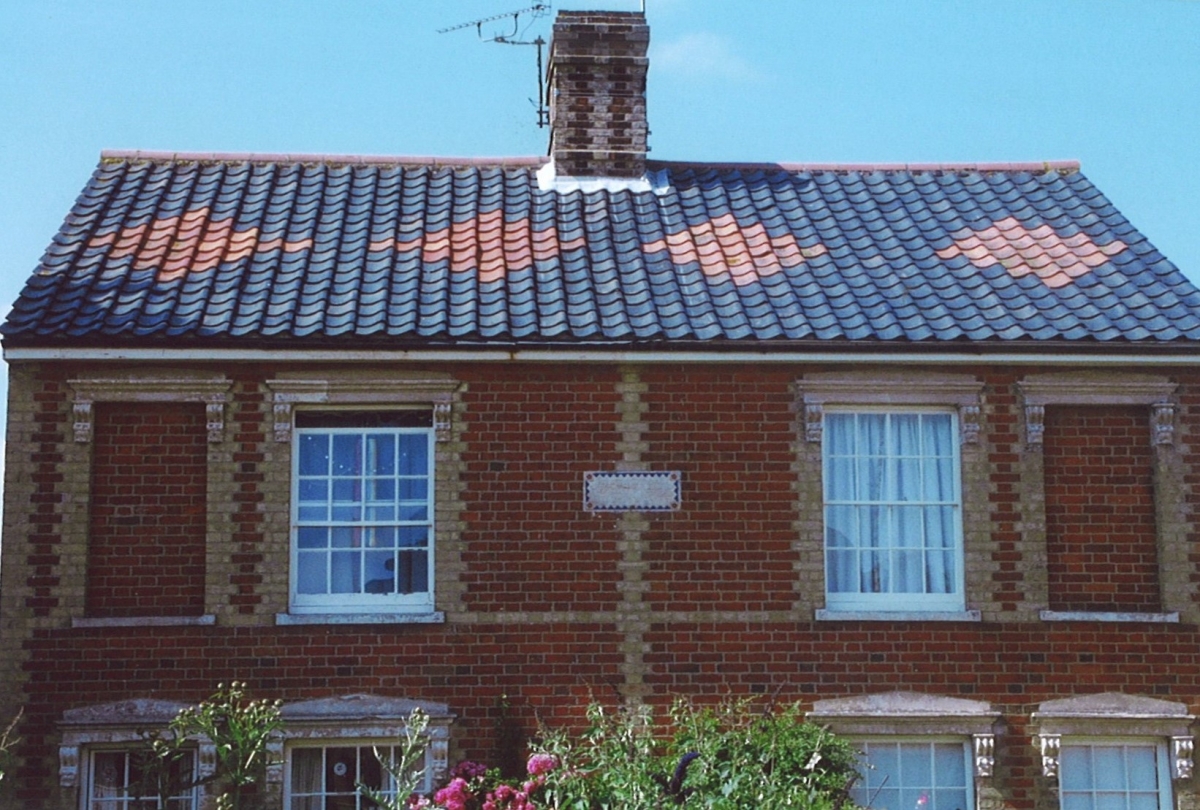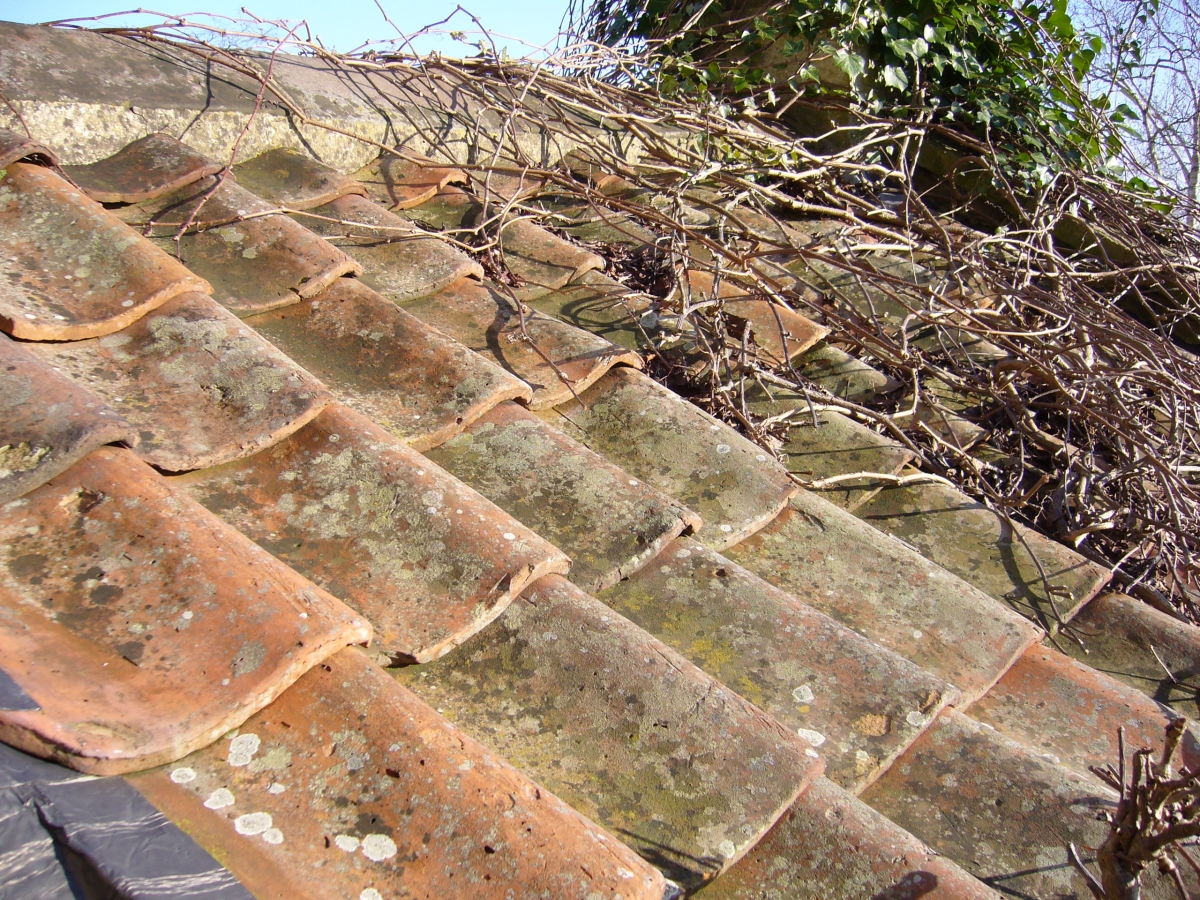Clay pantiles are one of our great vernacular roofing materials, and a sound understanding of them is essential in ensuring their protection. But while they share characteristics with plain tiles, there are some important differences.
What are pantiles?
Pantiles are large roof tiles, S-shaped in section. They are side lapping and the ends overlap only tiles in the course immediately below, unlike plain tiles which lap two courses. Pantiles are not to be confused with Roman tiles, which differ in profile.
A pantile-covered roof weighs just two-thirds of a plain-tiled one, and can be laid to a lower pitch.
Pantiles appeared in eastern coastal areas of England and Scotland during the 17th century, being imported at first from Holland. Except around Bridgwater, Somerset, they are rarely found in western counties.

Clay pantiles roofs
How do pantiled roofs deteriorate?
As with plain tiling, eaves, verges and abutments are vulnerable to leaks. Defects are more serious with pantiles, though because they have only a single lap. Careful detailing by a suitably experienced contractor is, therefore, essential. Localised repair, not retiling, will usually suffice.
Complete retiling is normally justified several times during the life of individual pantiles, which, though affected by frost, are long-lasting. Failure of battens and fixings is one not uncommon reason, especially on steep roofs previously thatched. Another is movement in the roof, leading to water penetration far more readily than with plain tiles.
A clay pantile roof in need of clearing
What might the maintenance and repair of an old pantiled roof entail?
Isolated slipped, broken or missing pantiles will, from time to time, require reinstating. Similarly, mortar fillets at abutments will need repointing. Where movement in the roof structure has disturbed pantiles, the joints between them are sometimes pointed in lime mortar, but this demands ongoing maintenance so longer-term retiling is generally preferable. Any excess moss should be carefully brushed off pantiles as it may promote damp, hastening their deterioration.
Foam or bituminous-type remedial treatments are inadvisable. They prevent proper inspection, hinder the reuse of pantiles and, by reducing ventilation, increase the risk of timber decay.
How should I introduce new pantiles?
Replacement pantiles should usually match the existing ones. Substitution with concrete pantiles, profiled steel decking or plain tiles is undesirable as, generally, is replacement of handmade pantiles with machine-pressed ones (or vice-versa). When retiling, the maximum number of old pantiles should be reused. Depending on circumstances, replacement pantiles can be mixed with old ones across the roof or reserved for less prominent slopes.
With patch repairs, carefully-sourced secondhand pantiles give a better fit than new ones. For major work, larger deficiencies will probably need making up with new, purpose-made pantiles.
Should I use sawn battens and modern roofing felt on old pantiled roofs?
In the past, additional weather protection was often provided with pantiles by ‘torching’ underneath with lime mortar, or pointing the tail and side joints. Alternatively, side joints were bedded in mortar on laths; a variation involved laying reed bundles between the battens before the pantiles were bedded. Where the appearance of the roof underside is important, like-for-like replacement is normally desirable, using, if appropriate, riven laths and oak pegs.
In other situations, the use of ‘breather’ felt with sawn battens and non-ferrous nails may be justified, but additional ventilation must be allowed for. Proprietary ventilators, invisible externally, are now available for pantiles.
Laths and battens need spacing very carefully to ensure pantiles seat properly over each other. The roof should be made reasonably level beforehand.
How should details be treated on old pantiled roofs?
The emphasis should be matching existing detail. Typical details are:
- Ridges of half-round or hogsback section with matching tile slips (‘galleting’), sometimes packing the spaces above the pantile hollows;
- Verges well bedded in lime mortar but, unlike with plain tiling, no inward tilt. With later pantiles, purpose-made double roll tiles are available so that left - and right - hand verges match;
- Eaves bedded in lime mortar, with or without sprockets to provide a light upward tilt;
- Lime mortar fillets or tile listings at abutments (although concealed lead soakers cannot be used because of the wide batten spacing).
Further Reading
English Heritage (2013) Roofing, Practical Building Conservation, Farnham: Ashgate Publishing Ltd
Technical advice line
Get involved

